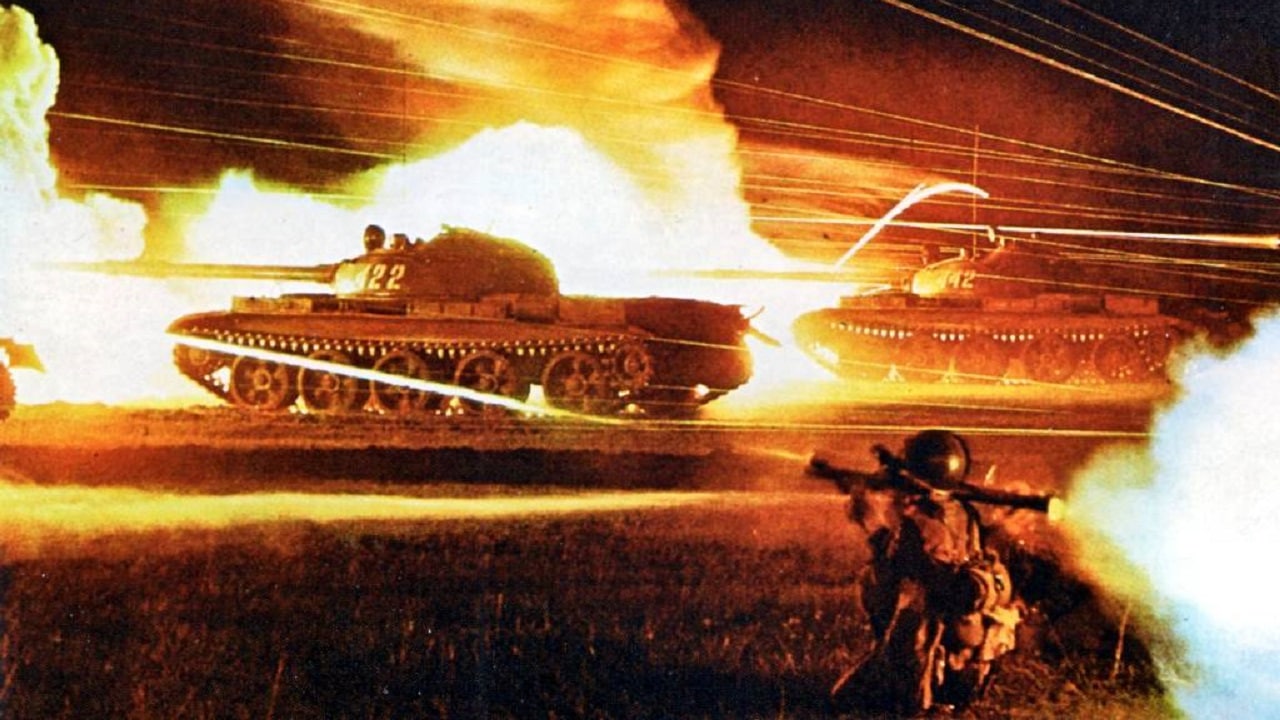The Old T-62 Tank is Headed to Ukraine: Russian forces have paid a heavy toll for their invasion of Ukraine. Reports indicate that after 100 days of fighting, Russia has lost as many as 15,000 troops and 1,300 tanks. Indeed, the war has decimated Russia’s fleet of modern tanks. To replenish its ranks, Russia is reportedly removing T-62s from storage for deployment to the frontlines.
The reports come from the Ukrainian Ministry of Defense: “As a result of losses during hostilities, the Russian enemy was forced to withdraw from storage T-62 tanks to recruit reserve battalion tactical groups that are being formed to be sent to Ukraine. In addition, equipment that was damaged and restored at repair and renovation plant is used to replenish the loss of weapons and military equipment.”
A Sign of a Depleted Force
My 1945 colleague Stavros Atlamazoglou reported that “open-source intelligence that has surfaced shows military trains carrying scores of T-62 medium battle tanks moving to the frontlines. The Russian commanders are likely to send the tanks to depleted battalion tactical groups. But the obsolete tank will only exacerbate the issue and create even more casualties.”
Deployment of the T-62 underscores how hollowed-out the Russian military is. The T-62 was first introduced in 1961, as an improvement of the T-55, which was developed while Harry Truman was in office. The T-62 costs just $300,000 per unit. By comparison, South Korea’s fourth-generation K2 Black Panther costs $8.5 million. Kept in reserves or in storage, the T-62 has been outdated since the 1970s. Production ceased in 1973.
The T-62 is built around a 115mm U-5TS “Molot” Rapira smoothbore tank gun. Supplementing the main gun is a 7.62mm PKT coaxial machine gun and a 12.7mm DShK 1939/46 antiaircraft heavy machine gun. The T-62 was armed with the world’s first smoothbore tank gun, which improved muzzle velocity over older systems. Heavier than the T-55, the T-62 is not particularly maneuverable.
The T-62 Carries Some Bad Memories
The T-62 is best remembered as the main Soviet battle tank during the ill-fated Afghanistan invasion of the 1980s. In Afghanistan, the Soviets used the T-62 for convoy protection and infantry support. U.S. intelligence claims that the Soviets lost 325 T-62s to Mujahideen forces, whereas the Soviets only confirmed the loss of 147. Abandoned, smoldering T-62s are an enduring image of the Soviet failure in Afghanistan. Soon, similar images of destroyed Cold War-era T-62s, may proliferate from the Russo-Ukraine conflict.
With armor suited toward repelling mid-century anti-tank weapons, the T-62 is no match for modern armor-piercing rounds. More modern Russian tanks, like the T-72 and T-84, with more durable armor systems, have been decimated in Ukraine. The Ukrainians, relying on Western-supplied anti-tank systems like the affordable yet effective FGM-148 Javelin, or the Next Generation Light Anti-tank Weapon, or NLAW, have been racking up kills against more adequate Russian tanks. In all likelihood, these lightweight, mobile, cheap anti-tank weapons will feast on the anachronistic T-62s.
With “side armor between 45mm and 80mm thick, the T-62 medium battle tank was a formidable fighting machine in its time. But now, it is antiquated, and even basic anti-tank weapons can penetrate its armor,” Atlamazoglou wrote. Indeed, these old may compound Russia’s problems in the poorly planned Ukrainian invasion.
Harrison Kass is a Senior Defense Editor at 19FortyFive. An attorney, pilot, guitarist, and minor pro hockey player, he joined the US Air Force as a Pilot Trainee but was medically discharged. Harrison has degrees from Lake Forest College, the University of Oregon, and New York University. He lives in Oregon and regularly listens to Dokken.

